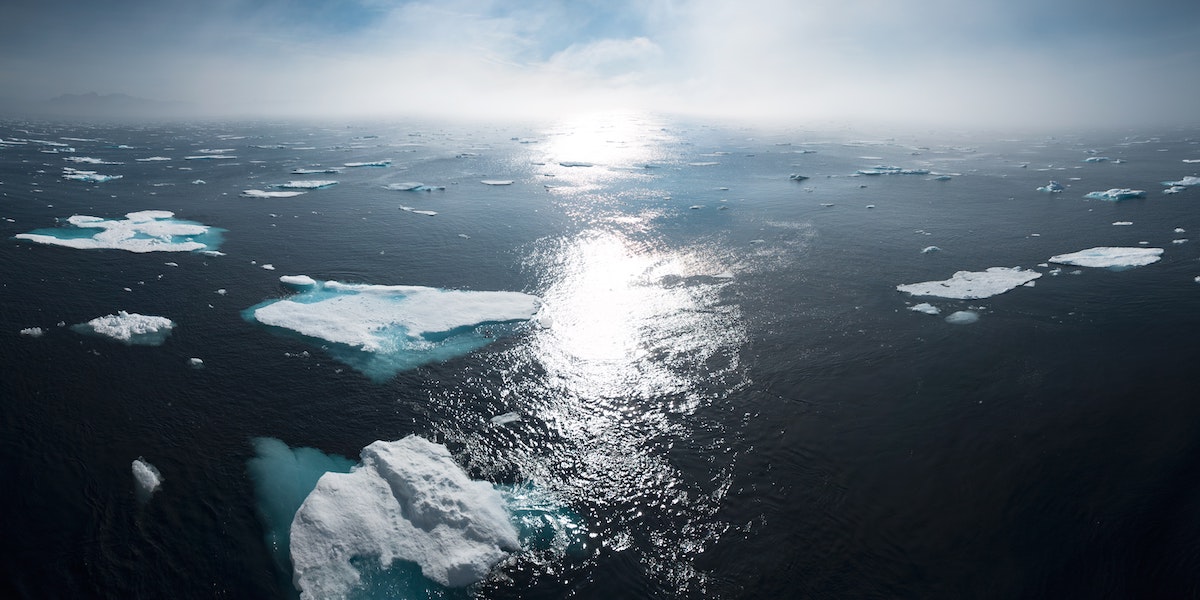What is the Arctic Sea Ice Minimum?
Published by Ocean Conservancy
Summer can be a time of change, especially as people venture out on vacation or get out of school. It’s a time of change for the Arctic, too, especially when it comes to sea ice. As summer progresses, you might hear some talk about the Arctic sea ice minimum. Before the news reports flood in, we’re here to explain a little bit of background of what the sea ice minimum actually is, how it’s changed over time and what it means for the Arctic—and the world.
So, what is the sea ice minimum?
We all know that warmer temperatures melt ice. So it’s no surprise that an icy place like the Arctic experiences big changes as summer months bring warmer weather. During the Northern Hemisphere’s summer, the amount of sea ice decreases, then increases again over the winter as colder temperatures allow ice to refreeze.
The phrase “Arctic sea ice minimum” indicates the point in the year at which the Arctic has the least amount of ice. Sea ice cover typically reaches its maximum amount in March, then reaches its minimum in September.
How has the sea ice minimum changed?
Although an annual cycle of melting and freezing is natural, climate change has caused big changes in sea ice variation. Since the 1970s, we’re seeing more ice melting over the summer and less ice forming in the winter. In 1980, the Arctic sea ice minimum was 7.9 million sq. km. In 2018, it was only 4.6 million sq. km—almost a 42% decrease. That’s like losing all of the U.S. east of the Mississippi River. In 2012, the Arctic had the lowest sea ice minimum on record at 3.4 million sq km—about the size of the United States west of Texas.
Things aren’t looking good for 2019. In June, we set a record for the lowest Arctic sea ice extent in 40 years of satellite record for this time of year, which doesn’t bode well for the rest of the summer months.


What does this mean?
Sea ice serves many purposes in the Arctic, including mitigating wind and wave action and reducing erosion along the coast. Indigenous peoples use Arctic sea ice as a platform for important subsistence hunting activities. Sea ice also helps keep the ocean waters cold and provides invaluable habitat to Arctic animals, including polar bears, walruses and certain species of seal. Reduced sea ice cover can increase environmental stress in the Arctic habitat and make it harder for ice-dependent animals to survive.
What happens in the Arctic also has major implications for the rest of the world. As ice melts, there is less of a temperature difference between the Arctic zone and the temperate zone, which can affect winds and weather patterns. This could result in extreme weather events like flooding, droughts or tornados, even in locations far south of the Arctic Circle.
Scientists are keeping a close eye on the annual sea ice minimum to assess implications for the Arctic ecosystem and predict how sea ice coverage will change in years to come. Some models predict that the Arctic will be completely ice-free part of the year by the end of the 21st century, if not sooner—all the more reason why we need to greatly decrease carbon emissions and continue working toward a healthy, thriving Arctic.
Sign up for our emails!
The post What is the Arctic Sea Ice Minimum? appeared first on Ocean Conservancy.
Read the full article at: https://oceanconservancy.org/blog/2019/07/08/arctic-sea-ice/



